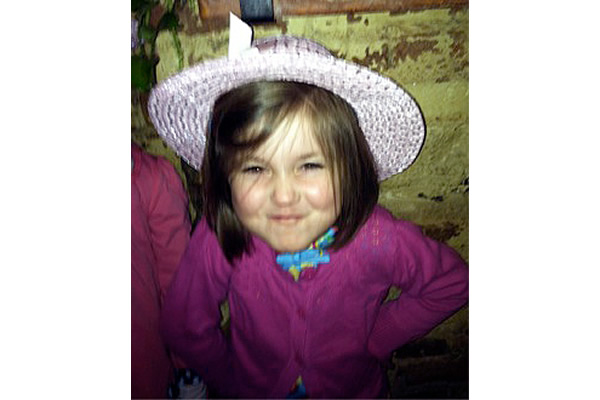Sometimes I do school and community programs. Some of my books feature newcomer kids. But mostly it was because I was friends with Sara Lesley Warner (@saralesleyarnold – Sara’s pen name). Sara’s a kidlit writer and media specialist at Henry Wilson School, Manchester, NH. So it was Sara who invited me to present with her on the topic, “Welcoming Kids to Diverse Libraries” at the NH School Library and Media Association this spring. And my focus was on how visiting authors could be part of the welcoming.

Librarians are often the link between their schools and authors who visit classrooms. Librarians and writers are natural partners. And sometimes they’re both, like Sara.
We both knew that libraries need to invite authors who are from culturally diverse backgrounds. We know kids thrive when they meet educators who are like themselves and speak their first language. Mariana Llanos is a Pura Belpré Honor award-winning writer.

Llanos was born in Peru, and now lives in the US. She reminds us about the power of representation and said the important thing is to invite authors who are from culturally diverse backgrounds into schools and libraries. That’s at the top.
What follows are tips in general for ways to support kids’ comprehension in a new language. I had to prepare a lot for this. I talked to many kidlit writers about what they do when presenting to English learners. I also spent the last school year as an EL (English Language) para, K-12, to understand this world. (In schools I saw the term EL, ELL, and ESOL all used for students learning English. I stick with EL here.) I saw the art of working everyday with EL kids like Sara does in her really busy library with a staff of one. The library was a “special” and classes came every hour.
I want to give you some context about ELs in schools in general. I found that most schools in the country are serving ELs. I read Streets of Gold: America’s Untold Story of Immigrant Success by Ran Abramitzky and Leah Boustan. They write that, “Immigrants tend to move to those locations in the U.S. that offer the best opportunities for upward mobility for their kids.” So immigrant families are mobile as they seek the best jobs for their children’s prosperity.
States vary widely in the number of ELs they serve. In California, nearly 20 percent of students are ELs statewide with the largest percentage in greater LA. In New Hampshire, 4 percent of students are ELs. But at the Henry Wilson School, Sara’s school, 33 percent are English learners. She knew the EL world and had a lot of tricks. (She also shared videos of EL kids telling exactly what they wanted in a library. For instance, they liked books in their first language, and they liked being interviewed by Sara so they could tell her all they wanted.)
Kidlit authors of various ethnicities themselves are bringing stories to kids as well as hopes to nurture the love of reading in increasingly diverse schools. Below are some strategies for inclusion that Sara demonstrated in her library, and other authors told me about. These strategies aren’t necessarily new; you may have been doing them all along. In the EL world, teachers say, What’s good for ELs is good for all students.

Some Strategies to Experiment With
Invite children to show what they know. Deb Bruss, author of Book, Book, Book, told me how she invites children to show what they know. She brings puppets representing each character in Book, Book, Book. A child might not know speak the word for the animal the puppet represents. So Deb might invite the child, Show me the cow. Show me the chicken. And the child can point. Then she says the names as she hands the puppets out, and the children help tell the story with their puppet. With older students, authors can give background information on the topic of their book. Show props and invite students to tell or draw what they know about a subject. This gives students a chance to share their knowledge about a topic. For instance, if a book had a character that’s a guinea pig, the author could ask if students had seen a guinea pig or what people think of guinea pigs in their home culture. A lot of interesting stories about cultural perspectives can come up about guinea pigs. (Love and Roast Chicken is my favorite guinea pig tale. It’s from Peru.)

Show visuals – props, objects kids can touch or experience with the senses, puppets, animals, large pictures – and introduce key words as a pre-reading warm up. These items will help children understand the English word you are connecting with the visual. You can also show maps if you are presenting about a place in the world. Tangible objects can also be used to give students background knowledge they might not have been exposed to and offer more context for your story. Some writers make signs with key words so that ELs have the English word three ways – 1) the written word spelled out in the English alphabet, 2) visually, such as with puppets or props, and 3) orally so kids can hear the sound of the word in English. They can put the sound together with the written word and the visual. You can do this with small groups as well as auditorium-sized groups.
Offer Interactive elements. A lot of authors talked about kinesthetic elements of their program. Lindsay Bonilla described how she presents her book, Polar Bear Island. She brings lots of props, and children play the roles of the characters in the book. They show the story with their movements and sound effects, while she tells the story. She offered another technique to give space to everyone. A lot of kids are quick to respond to questions she asks the group. She said,
“I call on these kids directly,” she said, and then later she walks through the group of students, bends down, and invites kids who are more silent like ELs can be to whisper a response. “That way everyone gets the chance to speak even if they don’t want to say it in front of the whole group.”
Create humorous situations that put kids at ease. Writer-illustrator Marty Kelley, creator of many picture books including Summer Stinks, naturally offers humor for everyone, and ELs benefit. His humor offers a sense of play and ease in which kids can relax and have fun with stories.
Put the captions on if you’re showing a video, suggests Cindy Rodriguez. She writes middle-grade adventure novels including her newest, Lola Reyes Is So Not Worried. Rodriguez said, “This not only helps students with hearing issues, but English learners benefit from hearing and seeing English that they can read at the same time as they listen to the video.”

Speak some words in students’ first language. Tasneem A. Bakr is an EL teacher and book creator. She says she’s careful doing this. “It’s a small gesture,” she said. “Simple words like Thank you. I try to do it with grace and humility. I always apologize beforehand in case I mispronounce something, even when I know the language well.
Allow kids to choose whether they want to talk about their own cultural Identity. Tammi Truax is a school media specialist and author. Yes! With Dr. Lilian Buckley she wrote The Pearl about a visit Martin Luther King made to a Portsmouth, NH church by that name. She said about presenting that book or any book where a community of people are represented: “I would never call on a student to speak for their community. If they want to talk and add to the story, I give them space.”
Celebrate the language assets that ELs bring to using English. I heard the Vietnamese writer Nguyễn Phan Quế Mai read from her adult novel The Mountains Sing. At the end she told us, “My English isn’t fluent so I can write it differently.” She can and does use English differently and told English learners in the crowd that they bring knowledge of their first language to the English language and because of that, they bring originality.
Bilingual authors – some were ELs themselves when they were kids – share their knowledge about presenting to English learners. One example is an article by another librarian and kidlit writer Jacqueline Jules, “10 Ways to Support ELLs in Your School Library”. It’s in ¡Colorín colarado! a bilingual site for educators and families with many excellent resources for visiting authors working with English learners in their programs.
My best idea is to be curious about all the children you work with the way Sara is. Listen to them. Share stories with them. Learn from them. Honor their first languages.
CLiF presenter Terry Farish writes books for children and young adults. Her Fall 2024 YA novel is Go Home, written in collaboration with Lochan Sharma.
“Go Home gives humanity to all.” – Lyn Miller Lachmann, author of LA Times YA Book of the Year Torch.
“Go Home is a book for this exact moment.” – Kirsten Cappy, I’m Your Neighbor Books.



